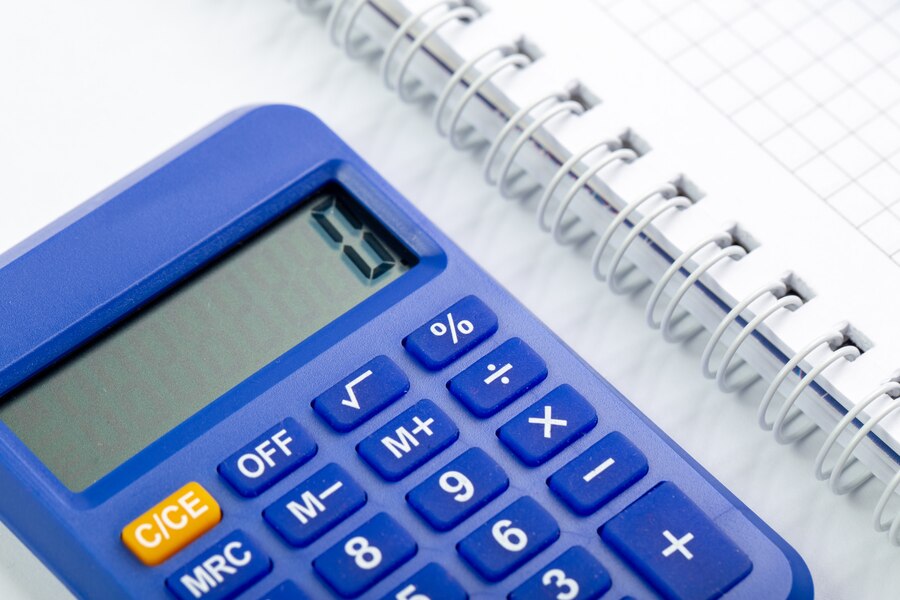What is a percentage calculator?
A percentage calculator is a free online tool that can be used to quickly and easily calculate a percentage from a fraction or fraction from a percentage. It can also be used to find the initial value when you know the percentage and part .
The calculator makes complex calculations simple by allowing you to enter two values either the known quantity, such as the actual percentage or the part value, and then calculating the other or the third value . It is a useful tool for quickly working out percentage difference in everyday situations, such as discounts, raises or taxes.
For example, if you wanted to figure out what a 25% discount off an item costing $50 would be, simply enter 50 into the ‘Part Value’ box and 25 into the ‘Percentage’ box. The calculator will then automatically calculate the discounted new price of $37.50 often in a decimal representation.
The percent sign
The percentage sign, “%”, is a mathematical symbol used to indicate a fraction of 100. It represents the whole number with a denominator of 100.
In mathematics, it can be written as a ratio, such as 5/100 or 5%. The percent symbol is also commonly referred to as the modulo operator in programming languages; it is an operator used to find the remainder of a division (modulo) operation.
In other words, it is used to determine what the remainder is when one number is divided by another.
The percentage sign can be seen in many areas such as finance, economics, business, and more. For example, interest rates are expressed as percentages. A company’s profits can also be expressed as a percentage of the total sales.
Overall, the percent sign has many applications in the world today. Whether you’re an accountant, investor, or just someone who wants to quickly calculate percentages, having a free online Percentage Calculator can make your life much easier.
How to calculate percentages?

Calculating percentages is a common task that comes up in everyday life, whether you’re dealing with finances, grades, or other measurements.
Fortunately, there’s an easy way to do it, the online Percentage Calculator. This simple tool gives you the ability to quickly and accurately calculate any percentage-based equation with ease.
For instance, let’s say you wanted to figure out what 20% of 100 is or calculate the average. All you need to do is enter the equation into the calculator: “100 0.2″, and it will give you the result of 20! You can also calculate percentages from a whole number, like 80%. For this calculation, you would enter “200 0.8″ and the calculator will show you 160 as the result.
The Percentage Calculator can also be used to figure out a statement’s percentage increase or percentage decrease when given two numbers which is often represented in decimal form.
Let’s say you wanted to know what 25% increase is of 400 dollars, all you need to do is enter “400 * 1.25” and the answer of 500 will be displayed.
The calculator can also calculate how much total you would have after applying a discount or deal. Let’s say you wanted to buy an item that was originally priced at $100, but the store is offering 20% off.
You just need to enter the initial price “100 * 0.8” and the calculator will show you that you would only pay $80 for the item.
The Percentage Calculator is an indispensable tool for students, business owners, and anyone else who needs quick and accurate results when dealing with figures. With its easy-to-use interface and precise calculation, it’s sure to make any task involving percentages a breeze!
How to find the specific percentage of a number?
Finding the percentage point of something is a simple process. To calculate it, you need to divide the part by the whole and then multiply that number by 100.
For example, if there are 10 pieces of fruit and you want to know how many make up 25 percent:
1. Divide 25 by 10 – which equals 2.5
2. Multiply 2.5 by 100 – which equals 250%
Therefore, 25 percent of 10 pieces of fruit is 2.5 pieces (or 250%). Percentages uses the decimal system meaning decimal number could be used to accurately provide the actual figures from a calculation.
If you want to save yourself the trouble of doing this calculation manually, a free online percentage calculator can do it in no time at all.
All you need to do is enter the part and whole amounts into the calculator, and it will automatically calculate the percentage for you. This makes it easy to double-check your answers and ensure that you get the correct result every time.
Percentage formulas
The percentage formula is relatively straightforward and can be expressed as:
input Percentage = (Part/Whole) x 100.
Part represents the number or amount that you want to find the percentage of, while Whole represents the total or whole amount in question. In other words, if you want to know what percent A is of B, the formula looks like this:
Percentage = (A/B) x 100.
For example, let’s say you want to calculate what 25 is as a percentage of 200. The equation would look like this:
Percentage = (25/200) x 100
The the absolute value will be 12.5%, so 25 is 12.5% of 200.
Why use a percentage calculator?
Knowing how to calculate percentage points accurately is an invaluable skill, and using a percentage calculator can be a great help. With the use of a percentage calculator, it’s easier to work out complicated equations or determine fractions quickly.
A percentage calculator can be used in a variety of situations, including figuring out your GPA or understanding stock market performance.
It can also help you calculate mark-ups and discounts, work out tax rates and commissions, or calculate your savings goals.
Knowing how to correctly use a percentage calculator enables you to make informed decisions on investments or compare offers from different companies. It can even be used to plan for retirement or figure out your budgeting needs.
Using a percentage calculator also helps you save time and effort. You don’t have to manually calculate each equation or figure out complex calculations on your own. Instead, you can quickly input the numbers into the calculator and get an exact result within seconds.
With a percentage calculator, you can also check for errors in your calculations as it can show you step-by-step how the equation was solved.
What can I calculate with a Percentage Calculator?
With this tool, you can perform a variety of calculations involving percents, Some of the most common uses for a percentage calculator include:
Calculating percent increase or decrease between two numbers
Finding the original number, given a percentage change
Calculating percent markups and discounts
Calculating sales tax and tip amounts
Determining interest rates on loans
Converting fractions to percents and vice versa.
How do you calculate gross vs net percentage?
Gross percentage is calculated by dividing the gross amount (revenue before any costs or taxes are deducted) by the net amount (amount after deductions).
This can be expressed as Gross % = (Gross Amount/Net Amount) x 100. To calculate the net percentage, divide the net amount by the gross amount. This can be expressed as Net % = (Net Amount/Gross Amount) x 100.
How do you find a percentage increase?
Percentage increase is calculated by finding the difference between two numbers and then dividing it by the original number.
You then multiply this result with 100 to get a percentage value. This can be expressed as input Percentage Increase = ((Final Value – Initial Value)/Initial Value) x 100.
How do you calculate multiple percentages at once?
You can use our online percentage calculator to easily calculate multiple percentages simultaneously. Simply enter your numbers in the corresponding fields and click ‘Calculate’ for an instant answer.
Can I save my calculations for later use?
Yes, this tool provides an option to save your calculations for future reference. Simply select the ‘Save’ option after entering your figures and then choose where to store them. This makes it easy to keep track of your calculations for later use.
FAQs
What is an online percentage calculator?
An online percentage calculator is a tool allowing users to easily and quickly calculate any number of percentages on various values.
It can be used for various purposes, such as calculating sales taxes or discounts, comparing proportions, computing loan interest rates, finding out what grade you achieved in a class or exam, determining income tax brackets and more.
How do I use an online percentage calculator?
Using an online percentage calculator is straightforward and simple. All you need to do is enter the numbers you want to calculate into the designated fields and hit ‘calculate’. The results will be instantly displayed as soon as you press ‘calculate’.
Are there any limitations with using an online percentage calculator?
Generally no; most online percentage calculators are designed to be user-friendly and intuitive so they should allow you to perform any calculation that you need.
Is it safe to use an online percentage calculator?
Yes; most reliable online percentage calculators are secure and don’t require any personal or financial information to use. As long as the calculator you’re using is from a trusted source, you can be sure that it is safe and secure to use.
Are online percentage calculators free to use?
Most online percentage calculators are completely free to use, as they don’t require any personal or payment information. However, some websites may offer additional features for a fee. It’s always best to check with the website before making your calculations to make sure that there won’t be any unexpected costs involved.
What type of accuracy can I expect when using an online percentage calculator?
Generally speaking, most online percentage calculators display results with high levels of accuracy. However, it’s always best to double check your results by cross-referencing them with another source or by hand. This will ensure that you get the most accurate and reliable results possible.
What types of numbers can I enter into an online percentage calculator?
Most online percentage calculators will take either positive or negative integers, decimals, fractions or mixed numbers as input. Generally speaking, it should be noted that the calculator will not work with non-numeric values (such as text).
percentage Problems
1. Problems with inaccurate calculations: If the wrong percentage is used, then calculations involving that figure will be incorrect. This could lead to major mistakes in judgment or decisions.
2. Issues with rounding errors: If a figure needs to be rounded, it can distort the data and create an inaccurate representation of the actual situation. This can lead to incorrect conclusions being drawn from the data.
3. Challenges with understanding percentages: Not everyone understands how percentages work or what they mean, so even if figures are accurate and not affected by rounding errors, people may not understand what a given percentage means for their context or decision-making process.
4. Difficulty interpreting comparison between two different numbers: Comparing two different percentages can be challenging, as the difference between them may not be immediately obvious. This can lead to confusion and misunderstanding of the true meaning behind the data.
5. Misleading figures: When percentages are used, they can be misinterpreted or misunderstood due to a lack of context or understanding. For example, if one number is represented as being “twice” another but the actual difference in percentage terms is only 1%, this could be misleading to those who don’t understand the nuances of such statistics.
6. Problems with over-simplification: In some cases, presenting data as a percentage could simplify it too much and obscure more important details about the underlying situation. It’s important to ensure that sufficient detail is included to avoid drawing inaccurate conclusions from the data.
7. Difficulty with large numbers: When percentages are used to represent very large numbers, it can be difficult for people to understand or relate to them. This is because it’s hard to conceptualize such a large number in percentage terms, so people may struggle to fully grasp its significance or meaning.
8. Issues with small numbers: Similarly, when representing very small numbers as percentages, it can be difficult for people to make sense of them due to their minute size and lack of context about what they mean in real-world terms.
9. Misconceptions about accuracy: Many people assume that figures expressed as percentages must be more accurate than those expressed without them; however, this is not necessarily the case and the accuracy of the data should not be assumed.


